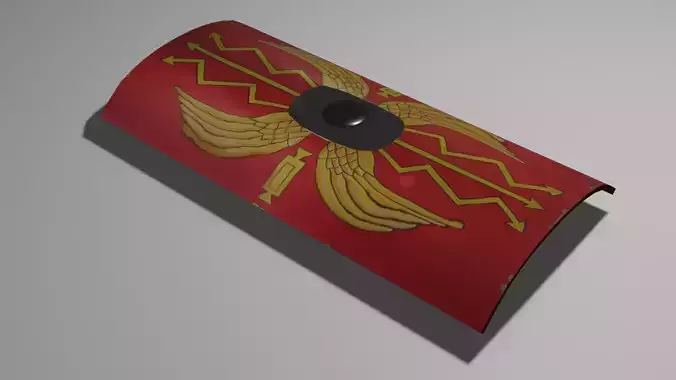1/36
The ancient Roman shield, known as the scutum, was a remarkable piece of defensive equipment that played a pivotal role in the military strategies and tactics of the Roman legions during their conquests and battles. This iconic shield was a true embodiment of Roman engineering and craftsmanship, featuring a combination of practical design, durability, and symbolic significance.
The scutum was a large, rectangular shield, typically measuring around 3 to 4 feet in height and 2 to 2.5 feet in width. Its construction consisted of a wooden frame, often made from oak or other sturdy hardwoods, which provided a robust core for the shield. This wooden frame was covered with multiple layers of animal hide, most commonly bovine or goat leather, which were carefully cured, stretched, and glued together to form a tough, resilient surface.
One of the key distinguishing features of the scutum was its curved shape. This curvature was achieved by bending the wooden frame in a semi-cylindrical form, creating a shield that offered excellent protection not only from the front but also from the sides. The curve allowed Roman soldiers to interlock their shields, forming an almost impenetrable barrier known as the testudo or tortoise formation. This tactic was especially effective in providing protection against missile attacks like arrows and javelins.
The scutum was adorned with various decorative elements and insignia, serving both functional and symbolic purposes. The central boss, a metal protrusion at the center of the shield, provided a handhold for the soldier, allowing them to hold the shield securely and control its movement. It also added weight to the shield, making it more effective in both defense and offense. The exterior of the shield often featured distinctive colors and designs, denoting the soldier's legion or cohort and fostering a sense of unity and pride.
The scutum was not only a defensive tool but also a symbol of Roman military might and discipline. It became a recognized emblem of the Roman army and a testament to the professionalism and training of Roman legionaries. Its durability and effectiveness in battle contributed to the success of the Roman legions in their campaigns across Europe, Africa, and the Middle East.
In summary, the ancient Roman scutum was a sophisticated and iconic piece of military equipment, combining practical design, durability, and deep symbolism. It served as a crucial component of Roman military tactics and strategies, providing protection, unity, and a formidable presence on the battlefield.
REVIEWS & COMMENTS
accuracy, and usability.




































